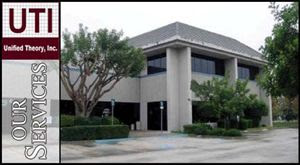The VOC emissions from paper, film, and foil coatings occur during coating
application/flash-off and drying/curing of the coatings. Some of the VOC in the coatings evaporates from the web into the coating application area during coating application. Additional VOC evaporates from the web in the flash-off area (prior to entering the dryer). The majority, usually greater than 90 percent, of the VOC in the coatings volatilizes in the drying ovens. The VOC that evaporates from the web in the drying oven(s) are vented through an exhaust stack. The amount of VOC emitted varies depending on the type of coatings being used.
Traditionally, conventional solvent-based coatings (which generally have higher VOC content), have been used in the paper, film, and foil surface coating industry. Due to increased regulation at the federal and State level, the industry has steadily moved toward alternative coating formulations that reduce the amount of air emissions per unit amount of coating solids used. The types of coatings used in the paper, film, and foil surface coating industry include solvent-borne, waterborne, hot-melt adhesives and other 100 percent solids coatings, reactive, and radiation-cure coatings.
Solvent-borne coatings are widely used in the paper, film, and foil surface coating industry. The solvent content of the coating is highly variable in solvent-borne coatings, and depends primarily on the type of coating applicator used (e.g., reverse roll coaters require the use of coatings with lower viscosities than knife coaters, therefore could require a higher solvent content). For solvent-borne coatings, coating formulations typically range from 40 to 80 percent solvents by weight, as supplied by the manufacturer. Users may dilute solvent-borne coatings
with additional solvents. Solvent-borne coatings are typically applied at 60 to 90 percent solvent by weight and sometimes higher. The primary solvents in solvent-borne coatings include methanol, toluene, xylene, methyl ethyl ketone, acetone, ethyl acetate, and ethanol. Knife coaters, reverse roll coaters, and gravure coaters are commonly used to apply solvent-borne coatings.
Waterborne coatings contain water as a significant part of the fluid, although some organic solvents may be used at up to 30 percent of the fluid. Most coating equipment used for solvent-borne coatings can also be used for waterborne coatings. Knife coaters and gravure coaters are particularly well suited to application of waterborne coatings. However, troughs or trays may have to be mixed more often when they contain waterborne coatings than when they contain solvent-borne coatings because waterborne coatings are more susceptible to coagulation or agglomeration of their solids.





